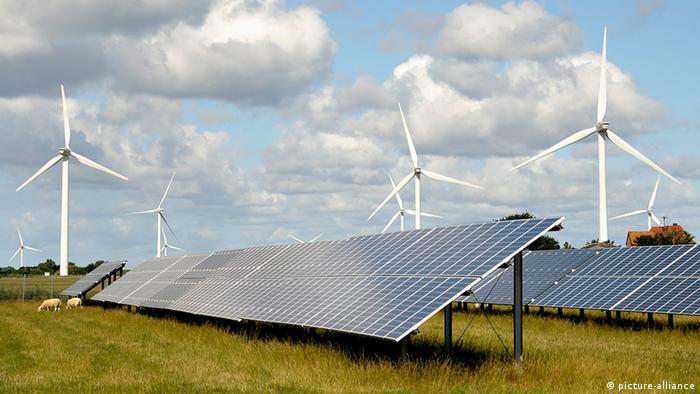Opponents of wind farms in the US and Canada insist that low-frequency noise generated by turbines is detrimental to human health. But in Germany, experts aren't convinced that infranoise poses a threat.
The whooshing sounds coming off the long rotator blades of a two megawatt wind turbine don't sound too bad at first. In fact, in densely populated areas of North Rhine-Westphalia, a state in western Germany, busy roads and train lines are considerably louder.
But, in addition to sound that can be heard from the spinning blades, the turbines also produce sounds at such low frequency that they can't be picked up by the human ear. This is infrasound and some people living near wind parks say it is making them sick.
Detlef Piorr is a sound testing expert with the North Rhine-Westphalia environment office in the city of Essen. He and his colleagues have been recording and studying infrasound for years.
"At wind farm sites, you can definitely show that there is infrasound there, if your microphones are good enough," he told DW. "But the volume is much lower than what humans will notice."
"That means, for us in Germany at least, infrasound is irrelevant. If people don't notice a sound, then we say it is having no effect on them physically."
A question of frequency
Whether humans can detect a sound depends on two separate factors: volume and frequency.
Infrasound exists at such a low frequency, or pitch, that humans can barely detect it. In order to hear tones in the infrasound range, the sound would need to be played very loudly.
Recently, a team of audio specialists in the US began recording infrasound samples. As they carried out their tests near the wind turbines, they reported dizziness, nausea and concentration problems. They said the symptoms only started to fade if they drove away from turbine field in their car.
In Germany, authorities have laid out strict regulations for the levels of allowable low frequency noise from machinery like wind turbines. For sounds of 10 Hz for instance, the volume needs to reach 95 decibels before it is deemed problematic. The sound of normal conversation is around 60 decibels.
Detlef Piorr is treating the US findings with caution, but he says the real problem is usually the audible sound, not infrasound.
"I know from complaints that I have dealt with, that when people think it is infrasound, actually, I could hear the regular sound coming from the wind turbines as well. This often the case."
Cautious but confident
At Vensys, a wind turbine manufacturer in southwest Germany, CEO Jürgen Rinck says he's read the relevant German infrasound studies. He believes that the amount of infrasound generated by wind turbines is too low to cause problems for human beings.
"Of course there is a lot of discussion on this topic," he told DW. "Infrasound just sounds dangerous too, because you can't really hear it. That makes people worried."
Still, Rinck says there is no need for concern.
"So far, it has only been proven to be damaging to humans at very high volume levels, around 170 decibels," he said. "That is well above the emissions that wind turbines produce."
US researchers disagree. There are reports that infranoise at 60 decibels has caused a debilitating syndrome with symptoms like dizziness and sleeping problems.
Locals worried
Turbines line the highway in Essen. Wind parks are being built all over Germany, as the country phases out nuclear power and increases its investment in renewables. Local resident Ruth is out walking with her dog in the field beside the turbines. She tells DW that she does hear sound from the machines occasionally in her home.
"The sound is always there," she says. "I hear it when I wake up and realize that something is there. It stays with me for the rest of the day."
But other residents told DW that they don't hear anything at all. They expressed concern that the audible sound and the shadows caused by moving rotor blades were bad for peoples' health, but they weren't aware of infrasound.
Nevertheless, sound expert Detlef Piorr says German authorities are taking the issue seriously.
 Germany intends to expand the use of renewable energy to 35 percent of total power consumption by 2020
Germany intends to expand the use of renewable energy to 35 percent of total power consumption by 2020
"It is not as if we in Germany are turning a blind eye to infrasound," he said. "If there are new findings, and there are things that need to be investigated, then the universities will get the necessary funding so that they can research it further."
Meanwhile, the German government seems to be taking the US reports seriously – a new research project investigating the effects of infrasound from wind farms has now been launched by the German Federal Environment Agency. It remains unclear when the results of the study will be released dw de



No comments:
Post a Comment